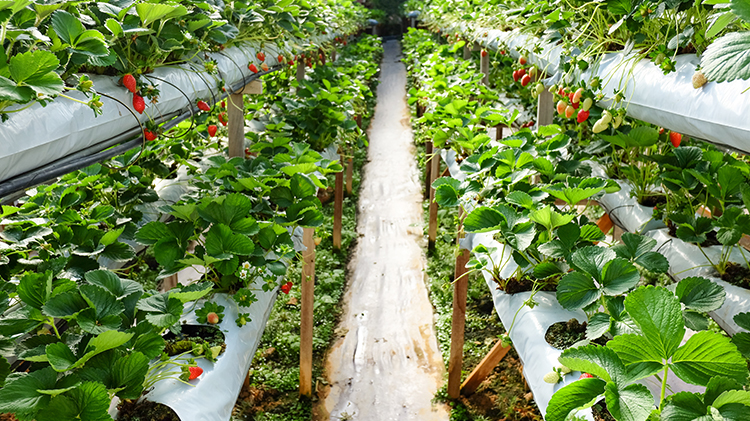The Setty Family Foundation: 2021 Applied Engineering Challenge

Register
ASHRAE’s stated goals and objectives include: extending the reach of heating, ventilating, air-conditioning and refrigeration (HVAC&R) information, connecting with others, and educating and adapting today’s technology for tomorrow to local and global communities to serve humanity and promote a sustainable world. Many engineering and sustainability challenges exist in the world. The 2021 Setty Family Foundation Applied Engineering Challenge (AEC) is intended to stimulate student-led groups to find engineering solutions for designing self-sustaining, interconnected communities.
Teams must consist of two to six students with each team member's name and school affiliation listed on the title page of the submission. Teams can consult industry professionals, such as local ASHRAE chapter members, or faculty advisors for mentorship and advice. However, all work, calculations, drawings, etc. that are presented in the final submission shall be generated exclusively by team members.
Entries should originate from an undergraduate engineering or architecture curriculum and all team members must be enrolled in an undergraduate program during the semester/term they contribute to the design.
Introduction
The built environment continues to expand as the world population grows. Therefore, it is imperative to design commercial and residential buildings as sustainably as possible to reduce their impact on Earth’s natural resources. With this growth, many times highly productive agricultural land gives way to urban expansion. The concept of indoor farming has been gaining traction in recent years due to these trends as well as other driving forces such as energy and water requirements and locally sourcing food supply chains. Looking to the future, what if new single or multi-family residential buildings included a growth room as part of their standard design?
Scope
Design an indoor farming system to meet the needs of your local community with regards to single or multi-family residential construction. The system can be designed for new or renovation construction types. The system should identify issues and provide solutions and/or next steps to solve these problems.
The system shall take into account multiple system variables, including space temperatures, humidity, lighting, acoustics, and outdoor conditions to determine the best course of action to be integrated into a residence.
Constraints
Designs should accommodate single-family residences (4,000 ft2 [372 m2] or smaller) or multi-family residences (20,000 ft2 [1,858 m2] or smaller. Assume the residences have heating, cooling, and ventilation systems that meet all ASHRAE standards. Designs shall consider all types of HVAC systems (constant volume, VAV, heat pumps etc.) that could be used in single or multi-family residential construction in your local area.
Judging
This project is intended to challenge not only design and engineering skills, but also your ability to foresee and correct both common and complex building issues related to indoor farming.
Projects shall be evaluated, at a minimum, according to the following criteria. For items not covered specifically below, judging will be based on the merits of the proposal and documentation presented as justifications. Teams are urged to use their creativity, but like most real life situations, the proposed solutions must adhere to industry approved engineering guidelines, utilize currently available technology, be financially feasible, and be deployable from concept through construction within a reasonable timeframe.
- Depth and breadth of solutions considered to each occupant issue
- Creativity and innovation of the proposed solution
- Quality of the reporting methods used for occupants and building operators
- Use of ASHRAE Standards and other related materials
Submission
Entries must be submitted electronically by June 8, 2021 to the ASHRAE Society FTP site established for this purpose. Only teams who register will receive the FTP site information, so please register at least 30 days prior to this date to allow for processing. The submission must be limited to a 25-page maximum technical report. The document must be formatted to 8.5 x 11 inch paper with margins of 1 inch, a font size of 11 points using either Arial or Times New Roman, and a line spacing not less than the Microsoft Word standard of 1.15. All documents must be delivered in PDF format and should be clearly readable in black and white print.
Prizes
Awards will be presented to the winners at the 2022 ASHRAE Winter Meeting to be held in Las Vegas, Nevada, United States of America as follows:
- 1st place
- 2nd place
- 3rd place
- Rising Star
In conjunction with the 2022 ASHRAE Winter Meeting, members of the winning teams will be invited to meet with ASHRAE’s Executive Committee.
First Place: $5,000 prize plus the entire team will receive free transportation and two nights’ lodging for (capped at $5,000) to attend the 2022 ASHRAE Winter Meeting where the award will be presented at the ASHRAE Plenary. A 24 x 36 inch ARCH D, or ISO A1 poster is required for display at the ASHRAE Student Program.
Second Place: One representative from the team will receive free transportation, two nights' lodging at the 2022 ASHRAE Winter Meeting where the award will be presented at the ASHRAE Student Program. A 24 x 36 inch ARCH D, or ISO A1 poster is required for display at the ASHRAE Student Program.
Third Place: One representative from the team will receive free transportation, two nights’ lodging at the 2022 ASHRAE Winter Meeting where the award will be presented at the ASHRAE Student Program. A 24 x 36 inch ARCH D, or ISO A1 poster is required for display at the ASHRAE Student Program.
Rising Star: One representative from the team will receive free transportation and two nights lodging for attendance at the 2022 ASHRAE Winter Meeting where the award will be presented at the ASHRAE Student Program. A 24 x 36 inch ARCH D, or ISO A1 poster is required for display at the ASHRAE Student Program.